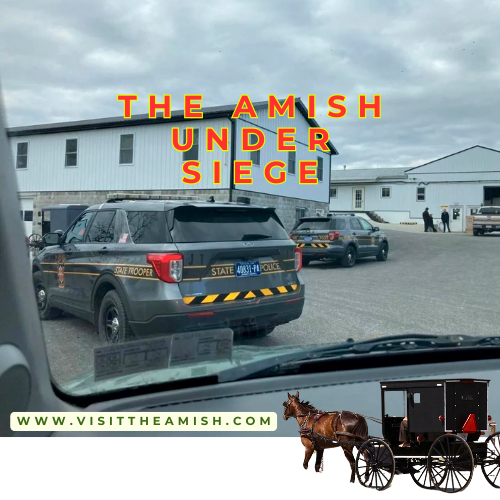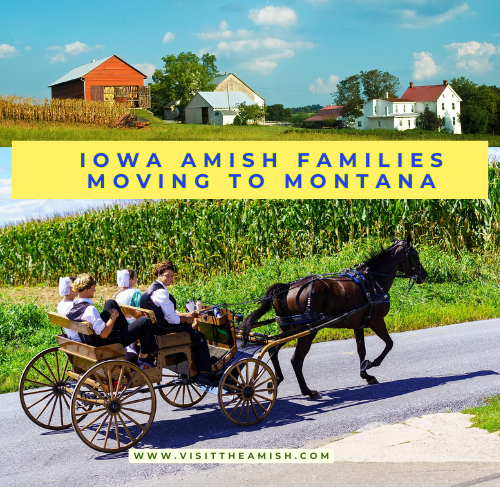Discover the Enchanting Amish Community of New Wilmington, PA
Nestled in the picturesque countryside of western Pennsylvania lies a hidden gem that offers visitors a unique glimpse into a simpler way of life. New Wilmington, a small town in Lawrence County, is home to a thriving Amish community that has preserved its traditional customs and values for generations. This article will take you on a journey through the fascinating world of the New Wilmington Amish, exploring their history, culture, and the many attractions that make this destination a must-visit for tourists seeking an authentic and enriching experience.
A Rich History
The story of the New Wilmington Amish community begins in 1847 when nine families, all bearing the surname Byler, made the journey from Ohio to settle in Lawrence County, Pennsylvania[1]. These pioneering families laid the foundation for what would become one of the most distinctive Amish settlements in North America.
Over the years, the community has grown and flourished, maintaining its unique identity while adapting to the changing world around it. Today, the New Wilmington Amish are known for their distinctive blue doors and brown buggies, setting them apart from other Amish groups in the region[1][3].
Distinctive Features
Blue Doors
One of the most striking visual elements of the New Wilmington Amish community is the prevalence of blue doors on their homes. This unique tradition serves as a symbol of their identity and sets them apart from other Amish settlements. As you drive through the countryside, you’ll be captivated by the sight of pristine white farmhouses adorned with these vibrant blue entryways.
Brown Buggies
Another distinguishing feature of the New Wilmington Amish is their use of brown buggies[3]. While many Amish communities opt for black or gray buggies, the New Wilmington Amish have chosen brown as their signature color. These horse-drawn carriages are a common sight on the local roads, offering visitors a glimpse into the traditional mode of transportation that has remained largely unchanged for centuries.
Amish Culture and Lifestyle
The New Wilmington Amish community adheres to a way of life that emphasizes simplicity, hard work, and strong family values. Their commitment to these principles is evident in every aspect of their daily lives, from their clothing and technology choices to their agricultural practices and craftsmanship.
Clothing and Appearance
Amish clothing is designed to be modest and practical, reflecting their values of humility and separation from the outside world. Men typically wear dark-colored suits, plain shirts, and broad-brimmed hats. Women don plain, solid-colored dresses with long sleeves and full skirts, often accompanied by a white prayer covering or bonnet.
Technology and Modern Conveniences
The Amish of New Wilmington, like many other Amish communities, limit their use of modern technology to maintain their traditional way of life. However, it’s important to note that their relationship with technology is more nuanced than many outsiders assume. While they generally avoid electricity from public utilities and don’t own cars, some Amish businesses may use generators or solar power for specific purposes, always with the approval of their church leaders.
Agriculture and Craftsmanship
Farming remains a central part of Amish life in New Wilmington. The community is known for its well-maintained farms, where traditional agricultural methods are still practiced. Visitors can often see Amish farmers working their fields with horse-drawn equipment, a sight that seems to transport onlookers to a bygone era.
In addition to agriculture, the Amish are renowned for their exceptional craftsmanship. Woodworking, quilting, and furniture making are just a few of the skills that have been passed down through generations. The quality and attention to detail in Amish-made goods are highly sought after by collectors and enthusiasts from around the world.
Visiting New Wilmington
For tourists interested in experiencing the unique culture of the New Wilmington Amish, there are several ways to respectfully engage with the community and learn about their way of life.
Guided Tours
Several local tour operators offer guided visits to Amish farms and businesses. These tours provide an excellent opportunity to learn about Amish culture from knowledgeable guides while respecting the privacy of the Amish families. Visitors can observe traditional farming methods, see craftsmen at work, and even enjoy a meal in an Amish home.
Shopping for Amish Goods
One of the best ways to support the local Amish economy and take home a piece of New Wilmington is by purchasing authentic Amish-made products. Several shops in and around New Wilmington offer a wide range of handcrafted items, including furniture, quilts, toys, and food products.
Amish-Style Dining
For a true taste of Amish culture, visitors can enjoy traditional Pennsylvania Dutch cuisine at local restaurants that serve Amish-inspired meals. These hearty, home-style dishes often feature locally sourced ingredients and time-honored recipes.
Local Attractions and Businesses
While the Amish community is the main draw for many visitors to New Wilmington, the area offers a variety of other attractions and businesses that cater to tourists. Here are some notable places to visit:
The Cheese House
Located at 3364 State Route 208, New Wilmington, PA 16142, The Cheese House is a popular stop for visitors looking to sample and purchase a wide variety of local and Amish-made cheeses. The shop also offers other gourmet food items and gifts.
The Apple Castle
This family-owned orchard and farm market has been a New Wilmington institution since 1861. Located at 277 State Route 18, New Wilmington, PA 16142, The Apple Castle offers fresh, locally grown produce, baked goods, and a variety of apple products.
Westminster College
While not directly related to the Amish community, Westminster College, located at 319 S Market St, New Wilmington, PA 16142, is a beautiful campus that adds to the charm of the town. Visitors can stroll through the grounds and admire the historic architecture.
New Wilmington Livestock Auction
For a unique experience, visitors can attend the weekly livestock auction held every Monday at 2756 Auction Rd, New Wilmington, PA 16142. This event provides insight into the agricultural aspects of both Amish and non-Amish farming in the region.
Accommodations
While there are no hotels within New Wilmington itself, several nearby towns offer comfortable accommodations for visitors:
- Hampton Inn & Suites Grove City
Address: 4 Holiday Blvd, Mercer, PA 16137
- Best Western Grove City Inn
Address: 1924 Leesburg Grove City Rd, Grove City, PA 16127
- Comfort Inn
Address: 118 Garrett Dr, Grove City, PA 16127
These hotels are all within a 20-30 minute drive from New Wilmington and provide easy access to the Amish community and other local attractions.
Respecting Amish Culture
When visiting the New Wilmington Amish community, it’s crucial to remember that you are entering a living, working community with its own customs and beliefs. Here are some guidelines to ensure a respectful and enjoyable visit:
- Always ask permission before taking photographs, especially of Amish people. Many Amish believe that posing for photographs goes against their religious beliefs.
- Dress modestly out of respect for Amish values.
- Avoid entering private property without invitation or permission.
- Be mindful of traffic when driving, as you may encounter horse-drawn buggies on the roads.
- Support local businesses by purchasing Amish-made goods and dining at local establishments.
Best Times to Visit
New Wilmington and its Amish community are beautiful year-round, but each season offers a unique experience:
- Spring: Witness the awakening of nature as Amish farmers begin planting their crops.
- Summer: Enjoy lush green landscapes and the opportunity to purchase fresh produce from roadside stands.
- Fall: Experience the breathtaking autumn foliage and harvest-time activities.
- Winter: See the serene beauty of snow-covered farms and potentially witness traditional ice harvesting.
Conclusion
A visit to the Amish community of New Wilmington, PA, offers more than just a tourist experience; it provides a window into a way of life that has remained largely unchanged for generations. The blue doors and brown buggies serve as visual reminders of the unique identity of this community, inviting visitors to slow down and appreciate the simpler things in life.
Whether you’re interested in history, culture, craftsmanship, or simply seeking a peaceful retreat from the fast-paced modern world, New Wilmington has something to offer. By approaching your visit with respect and curiosity, you’ll gain invaluable insights into the Amish way of life and create lasting memories of this enchanting corner of Pennsylvania.
As you plan your trip to New Wilmington, remember that the true value of your visit lies not just in the sights you’ll see or the goods you’ll purchase, but in the opportunity to gain a deeper understanding of a culture that continues to thrive in the heart of modern America. The blue doors and brown buggies of New Wilmington are more than just charming visual elements; they are symbols of a community that has much to teach us about the importance of tradition, hard work, and living in harmony with the land.
Citations:
[1] https://amishamerica.com/blue-doors-brow/
[2] https://profile.typepad.com/6p0120a605b364970b/events
[3] https://amishamerica.com/my-top-five-amish-settlements/
[4] https://newcastleshapenote.co.uk/amish-aprons-for-women
[5] https://butelinedance.co.uk/amish-aprons-for-women
Like this:
Like Loading...

























